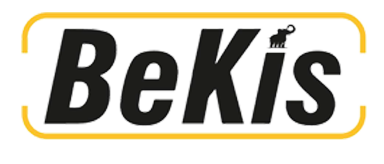- 20 October 2022
- By atomedya
- Bookkeeping

You don’t need a separate account for every product you sell, and you don’t need a separate account for each utility. COAs are typically made up of five main accounts, with each having multiple subaccounts. Most QuickBooks Online plans, for example, support up to 250 accounts. The average small business shouldn’t have to exceed this limit if its accounts are set up efficiently.
The normal balance is the expected balance each account type maintains, which is the side that increases. As assets and expenses increase on the debit side, their normal balance is a debit. Dividends paid to shareholders also have a normal balance that is a debit entry. Since liabilities, equity (such as common stock), and revenues increase with a credit, their “normal” balance is a credit. Table 1.1 shows the normal balances and increases for each account type.
Debits and Credits Chart
By understanding and tracking the normal balance of Accounts Payable, businesses can manage their short-term financial obligations efficiently. If the rented space was used to manufacture goods, the rent would be part of the cost of the products produced. Expenses normally have debit balances that are increased with a debit entry. Since expenses are usually increasing, think “debit” when expenses are incurred. A contra account contains a normal balance that is the reverse of the normal balance for that class of account. The contra accounts noted in the preceding table are usually set up as reserve accounts against declines in the usual balance in the accounts with which they are paired.

The conceptual framework sets the basis for accounting standards set by rule-making bodies that govern how the financial statements are prepared. Here are a few of the principles, assumptions, and concepts that provide guidance in developing GAAP. Salaries Expense will usually be an operating expense (as opposed to a nonoperating expense). Depending on the function performed by the salaried employee, Salaries Expense could be classified as an administrative expense or as a selling expense. If the employee was part of the manufacturing process, the salary would end up being part of the cost of the products that were manufactured. By having many revenue accounts and a huge number of expense accounts, a company will be able to report detailed information on revenues and expenses throughout the year.
How is a chart of accounts organized?
For instance, when a business buys a piece of equipment, it would debit the Equipment account. It should be noted that if an account is normally a debit balance it is increased by a debit entry, and if an account is normally a credit balance it is increased by a credit entry. So for example a debit entry to an asset account will increase the asset balance, and a credit entry to a liability account will increase the liability.
7 Best Savings Accounts of April 2024 (Up to 5.27%) – NerdWallet
7 Best Savings Accounts of April 2024 (Up to 5.27%).
Posted: Fri, 26 Apr 2024 07:00:00 GMT [source]
Equity (what a company owes to its owner(s)) is on the right side of the Accounting Equation. If an account has a Normal Debit Balance, we’d expect that balance to appear in the Debit (left) side of a column. If an account has a Normal Credit Balance, we’d expect that balance to appear in the Credit (right) side of a column.
4 Rules of Debit (DR) and Credit (CR)
Because both accounts are asset accounts, debiting the cash account $15,000 is going to increase the cash balance and crediting the accounts receivable account is going to decrease the account balance. When we sum the account balances we find that the debits equal the credits, ensuring that we have accounted for them correctly. A set of financial statements includes the income statement, statement of owner’s equity, balance sheet, and statement of cash flows.
In accounting, however, debits and credits are neutral terms that simply reflect the dual-sided nature of recording transactions. They do not signify good or bad financial events but normal balance of accounts list are tools to maintain the equilibrium of the accounting equation. Expense accounts are used to record the consumption of assets or services that are necessary to generate revenue.
The significance of these balances extends beyond mere record-keeping; they are essential in painting a true picture of a company’s financial position. Missteps in this area can lead to distorted financial statements, misinformed decisions, and potential compliance issues with accounting standards. Under the accrual basis of accounting, the Interest Revenues account reports the interest earned by a company during the time period indicated in the heading of the income statement. Interest Revenues account includes interest earned whether or not the interest was received or billed.
- For example, when making a transaction at a bank, a user depositing a $100 check would be crediting, or increasing, the balance in the account.
- There are some exceptions to this rule, but always apply the cost principle unless FASB has specifically stated that a different valuation method should be used in a given circumstance.
- Under the accrual basis of accounting the account Supplies Expense reports the amount of supplies that were used during the time interval indicated in the heading of the income statement.
- Missteps in this area can lead to distorted financial statements, misinformed decisions, and potential compliance issues with accounting standards.



